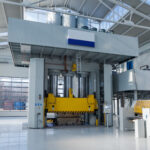

BASF, Flex-N-Gate, Toyota and L&L Products were named finalists for the 2023 JEC Innovation Award in the Automobile and Road Transportation – Design Part category with the composite seatback design of the 2022 Toyota Tundra. The goal was to make the vehicle as light and efficient as possible, but also cost-effective, with flexible design and more storage space for the end user….

La perdita di performance della Front Wing dal punto di vista strutturale, nel prototipo della stagione 2022, ha spinto il Team Dynamis PRC a realizzare analisi esplicite ad impatto con i coni delimitanti il tracciato. In questo modo, è possibile valutare come implementare sequenze di laminazione e la geometria di alcuni componenti dell’assieme dell’ala frontale….

The AIMPLAS’s FOREST (advanced lightweight materials for energy-efficient structures) project aims to provide new innovative eco-composites for safe and sustainable transport applications, by combining the development of bio-based polymers and additives, recycled fibers with greater resource efficiency and particles to avoid electromagnetic interference in full alignment with the EU 2030 Climate and Energy Framework….

Hikari, Ranger Compositi e il Laboratorio Polimeri e Compositi del Dipartimento di Ingegneria dell’Università di Ferrara Italia hanno studiato un nuovo materiale composito, denominato “Green Moulding Composite” o GMC, simile a un normale Sheet Moulding Compound o un Bulk Moulding Compound, ma in cui i tradizionali componenti sono stati sostituiti da soluzioni più compatibili con l’ambiente. Tale materiale è stato utilizzato per la realizzazione di battery cover ecosostenibili….

L’automotive sta evolvendo verso un nuovo mondo, incentrato sui veicoli ecologici, elettrici e interattivi, sul carburante a idrogeno e su altre soluzioni che solo pochi anni fa sembravano irrealizzabili. In quest’ottica il Gruppo Persico ha lavorato con OEM e Tier1 per sviluppare un serbatoio in materiali compositi per lo stoccaggio dell’idrogeno….

